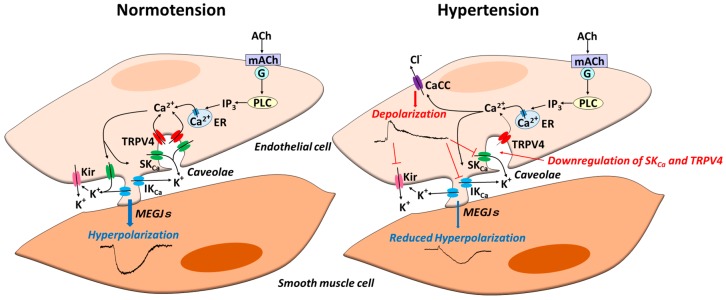Figure 3.
Endothelial ion channels in normotension and hypertension. In normotension, in response to agonist stimulation of endothelial cells, a rise in intracellular Ca2+ occurs due to the release from intracellular Ca2+ stores and Ca2+ entry via transient potential vanilloid type 4 channel (TRPV4). A rise in intracellular Ca2+ subsequently generates endothelium-dependent hyperpolarization (EDH) through the activation of both small (SKCa) and intermediate conductance (IKCa) Ca2+-activated K+ channels. In some arteries, K+ released from endothelial KCa channels activates endothelial Kir channels, which in turn amplifies EDH. EDH spreads to adjacent smooth muscle cells via myoendothelial gap junctions (MEGJs), resulting in vascular relaxation. In hypertension, alterations of endothelial ion channels additively reduce EDH; these alterations include downregulation of endothelial SKCa and TRPV4 channels, upregulation of endothelial Ca2+-activated chloride channels (CaCCs), and functional loss of endothelial Kir channels.

